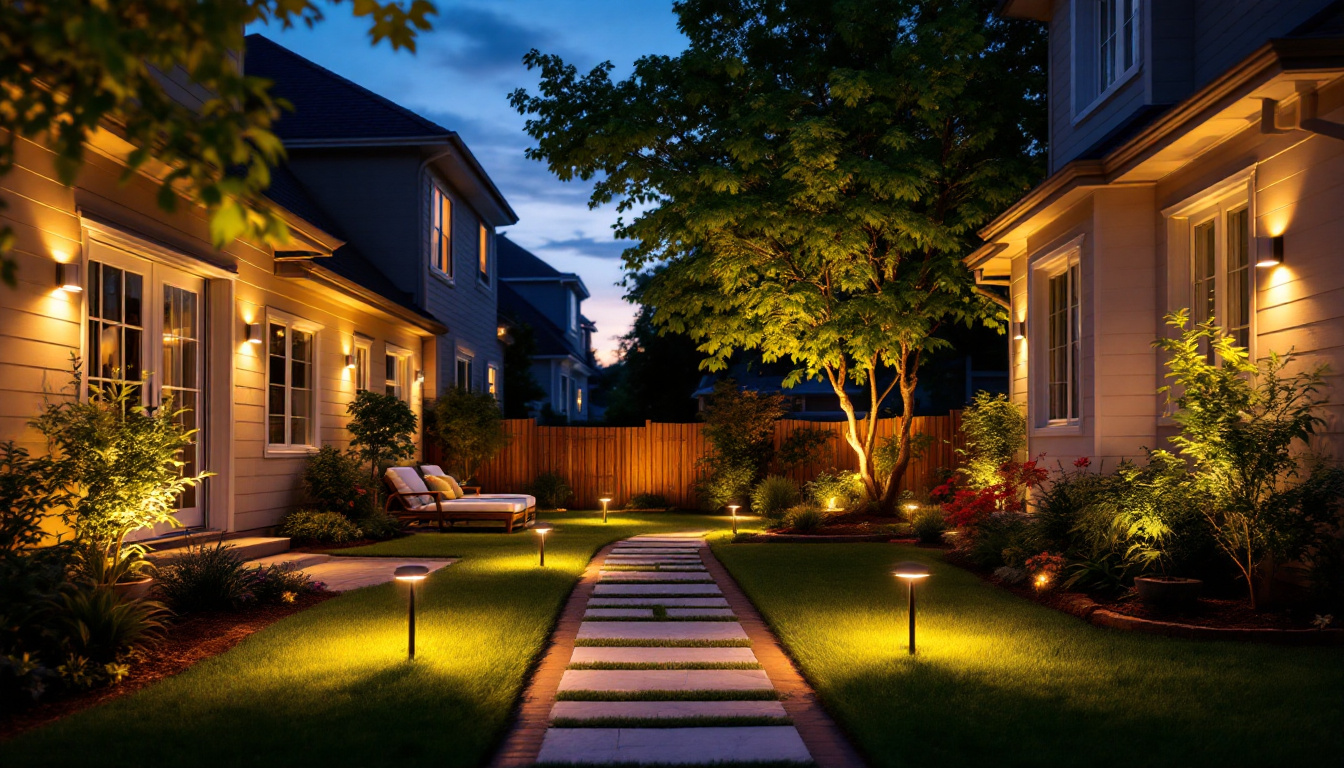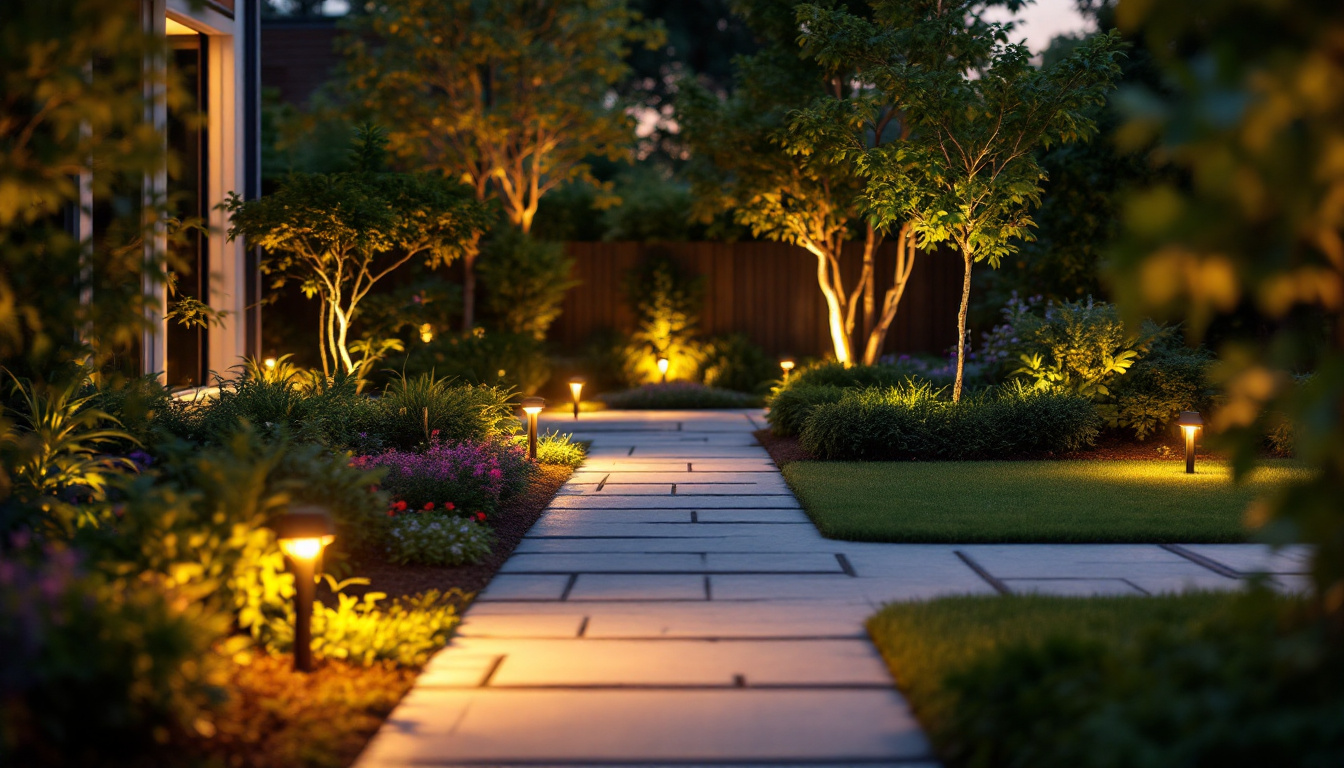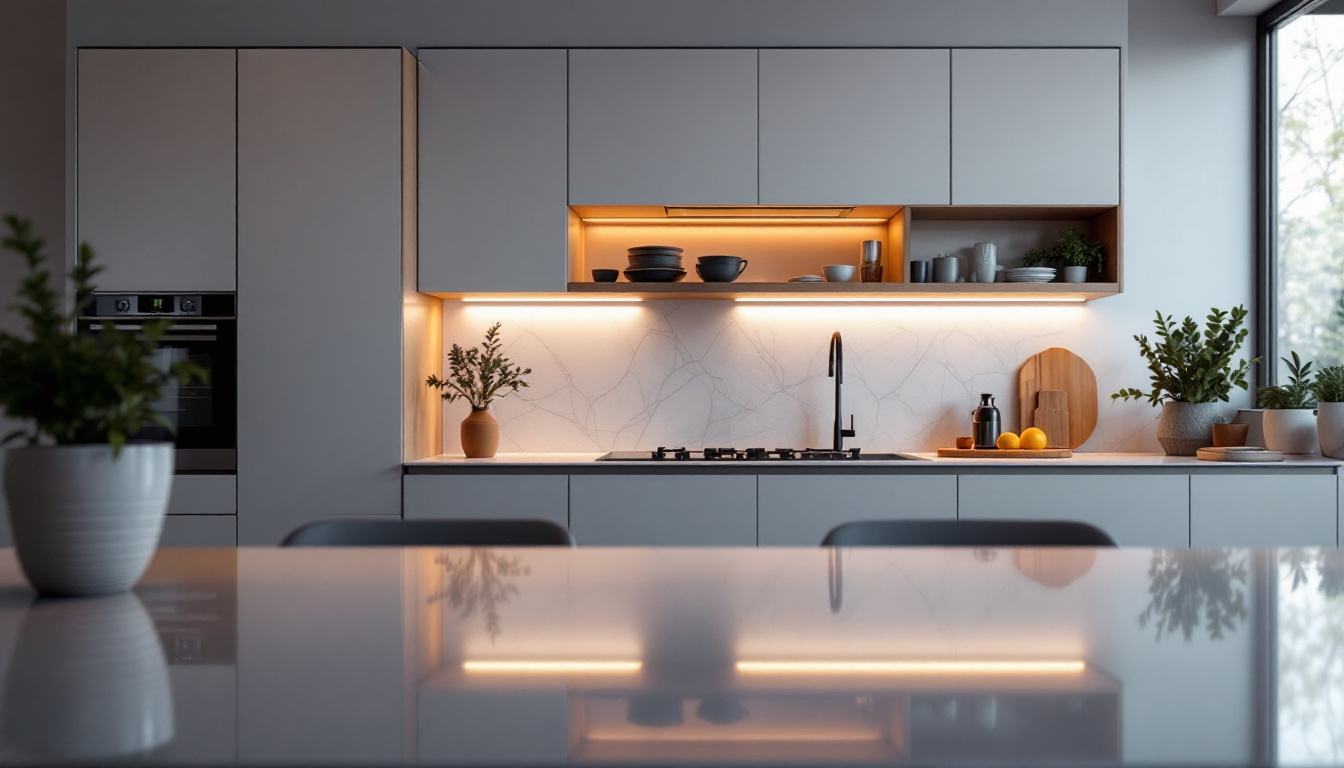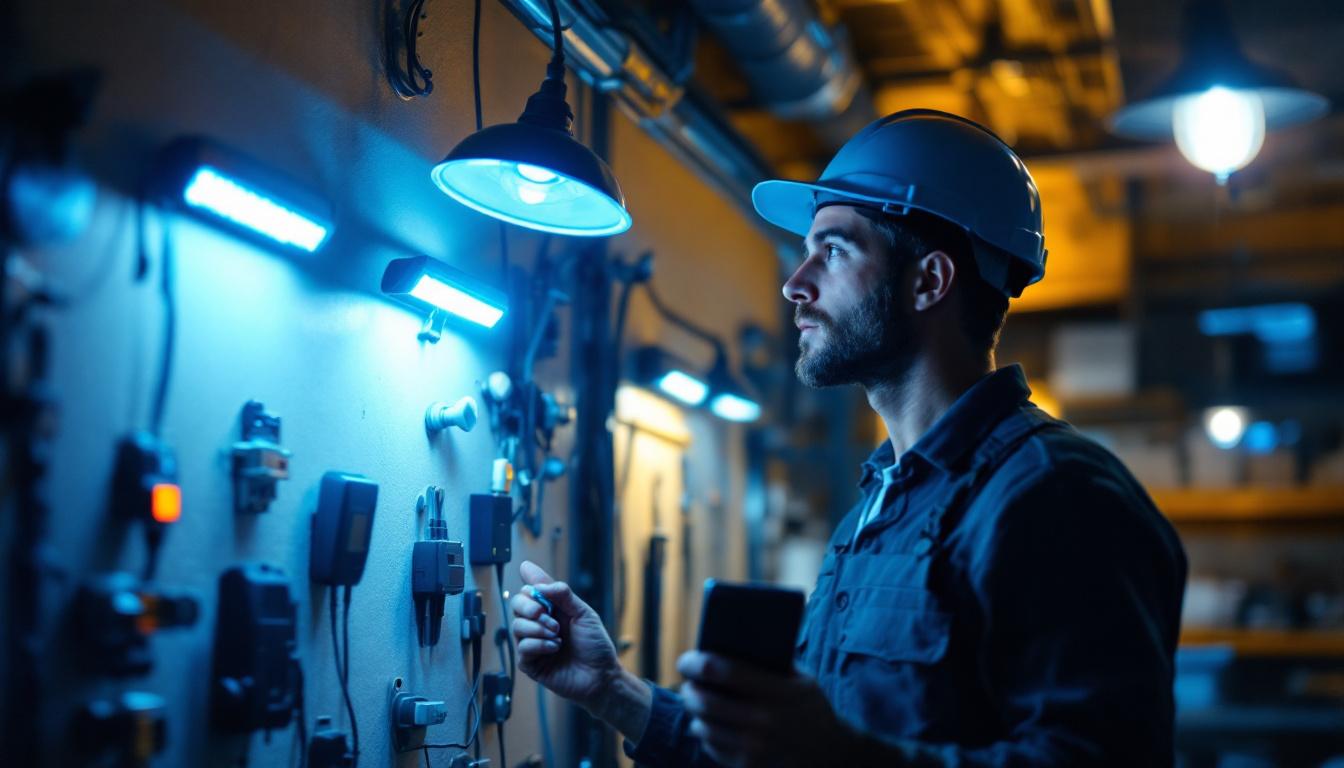
As outdoor spaces continue to gain importance in residential design, the role of lighting contractors has evolved significantly. Smart lighting solutions are now at the forefront of enhancing backyard aesthetics, safety, and functionality. This article delves into the various approaches that lighting contractors can adopt to create captivating backyard lighting designs.
Backyard lighting serves multiple purposes, from enhancing the visual appeal of a property to providing safety and security. Properly designed lighting can transform an ordinary outdoor space into an inviting retreat, perfect for entertaining guests or enjoying quiet evenings.
Moreover, effective lighting can highlight architectural features, landscaping, and pathways, ensuring that these elements are not only functional but also aesthetically pleasing. As a lighting contractor, understanding the multifaceted role of backyard lighting is crucial for delivering value to clients.
One of the primary goals of backyard lighting is to enhance the overall aesthetics of the space. This can be achieved through various techniques, such as uplighting trees, spotlighting sculptures, or using string lights to create a cozy atmosphere. The right lighting can accentuate the natural beauty of the landscape and create a warm, inviting ambiance.
When selecting lighting fixtures, consider the style and theme of the backyard. For instance, modern designs may benefit from sleek, minimalist fixtures, while a rustic garden may call for vintage-style lanterns. Tailoring the lighting to complement the existing landscape is essential for achieving a harmonious look. Additionally, incorporating color-changing LED lights can add a playful element to the space, allowing homeowners to switch up the mood for different occasions, from festive gatherings to romantic dinners.
Safety is another critical aspect of backyard lighting. well-lit pathways, steps, and entrances are vital for preventing accidents and ensuring that guests can navigate the space comfortably. Motion sensor lights can also enhance security by illuminating areas when movement is detected, deterring potential intruders.
Incorporating solar lights along pathways or near entrances not only adds safety but also promotes energy efficiency. These lights charge during the day and automatically illuminate at night, providing a sustainable solution for outdoor lighting needs. Furthermore, using warm-toned lights can create a welcoming environment while still ensuring that darker areas are adequately illuminated, striking a balance between safety and ambiance.
Beyond aesthetics and safety, backyard lighting should also serve functional purposes. For example, lighting can be strategically placed around seating areas, outdoor kitchens, or fire pits to enhance usability during evening gatherings. Dimmable lights can further enhance the experience, allowing users to adjust the brightness according to the mood and occasion.
Incorporating smart lighting technology can also elevate functionality. With the ability to control lighting through mobile devices or voice commands, homeowners can easily adjust settings to suit their needs, whether it’s hosting a dinner party or enjoying a quiet night under the stars. Additionally, integrating timers can automate lighting schedules, ensuring that the backyard is always welcoming when the sun sets, while also conserving energy during the times when the space is not in use. This level of control not only enhances convenience but also allows for a personalized outdoor experience that can adapt to any lifestyle.
The selection of lighting fixtures is a critical decision that can impact the overall effectiveness of a backyard lighting design. Factors such as style, durability, and energy efficiency should all be considered when making this choice.
Lighting contractors must familiarize themselves with a variety of fixture options available on the market, ranging from traditional incandescent bulbs to modern LED solutions. Each type has its advantages and can be used effectively in different scenarios.
There are several types of lighting fixtures commonly used in backyard settings. Path lights are ideal for illuminating walkways, while spotlights can be used to highlight specific features, such as trees or sculptures. String lights are perfect for creating a festive atmosphere, while wall-mounted fixtures can provide ambient lighting for seating areas.
Additionally, solar-powered fixtures are gaining popularity due to their ease of installation and energy efficiency. These lights can be placed in various locations without the need for electrical wiring, making them a versatile option for many homeowners.
In today’s environmentally conscious world, energy efficiency is a significant consideration for many homeowners. Lighting contractors should prioritize energy-efficient options, such as LED fixtures, which consume less power and have a longer lifespan compared to traditional incandescent bulbs.
Moreover, integrating smart lighting solutions can further enhance energy efficiency. Homeowners can schedule lights to turn on and off at specific times, ensuring that lights are only used when needed. This not only saves energy but also reduces electricity costs over time.
Given that backyard lighting fixtures are exposed to the elements, durability and weather resistance are essential factors to consider. Lighting contractors should choose fixtures made from materials that can withstand harsh weather conditions, such as corrosion-resistant metals or high-quality plastics.
Additionally, ensuring that fixtures are rated for outdoor use is crucial. This includes checking for proper seals and gaskets that prevent moisture from entering the fixtures, which can lead to electrical failures and reduced lifespan.
A well-thought-out lighting plan is essential for maximizing the effectiveness of backyard lighting. This plan should consider the layout of the space, the specific needs of the homeowners, and the desired ambiance.
Lighting contractors should begin by conducting a thorough assessment of the backyard, taking note of key features, existing landscaping, and areas that require illumination. This assessment will provide valuable insights for creating a tailored lighting design that meets the client’s expectations.
Dividing the backyard into different zones can help create a more dynamic and functional lighting design. For instance, separate zones can be designated for dining areas, relaxation spots, and pathways. Each zone can then be illuminated according to its specific purpose, ensuring that the lighting is both practical and aesthetically pleasing.
For example, a dining area may benefit from brighter, focused lighting to facilitate meals, while a relaxation zone could feature softer, ambient lighting to create a tranquil atmosphere. By designing distinct zones, lighting contractors can enhance the overall experience of the outdoor space.
Smart lighting technology is revolutionizing the way outdoor spaces are illuminated. By integrating smart controls, homeowners can manage their backyard lighting remotely, adjusting brightness levels or changing colors to suit their mood. This technology can also be programmed to follow specific schedules, ensuring that lights turn on and off automatically.
Incorporating smart technology not only enhances convenience but also allows for greater customization. Homeowners can experiment with different lighting scenes for various occasions, from lively gatherings to serene evenings alone.
Once the lighting plan has been implemented, it is essential to test and adjust the design as needed. Lighting contractors should conduct a walkthrough with the homeowners to assess the effectiveness of the lighting and make any necessary adjustments. This may involve repositioning fixtures, changing bulb types, or altering brightness levels.
Regular maintenance is also crucial to ensure that the lighting system continues to function optimally. This includes cleaning fixtures, replacing bulbs, and checking for any electrical issues that may arise over time.
While designing and installing backyard lighting, contractors may encounter various challenges. Understanding these potential issues and having solutions ready can help ensure a smooth process and a successful outcome.
Some common challenges include dealing with uneven terrain, managing electrical wiring, and addressing homeowner preferences. Each of these challenges requires careful consideration and strategic planning to achieve the desired results.
Uneven terrain can pose a significant challenge when designing backyard lighting. This may require additional planning to ensure that lights are positioned correctly and effectively illuminate the desired areas. Using adjustable fixtures or installing lights on stable bases can help mitigate this issue.
In some cases, it may be necessary to incorporate additional landscaping elements, such as retaining walls or steps, to create a more even surface for lighting installation. This not only enhances the lighting design but also improves the overall functionality of the space.
Electrical wiring can be a complex aspect of backyard lighting installation. Contractors must ensure that all wiring is safely installed and complies with local codes and regulations. This may involve burying cables underground, using conduit for protection, or employing low-voltage systems for added safety.
Additionally, planning the electrical layout in advance can help streamline the installation process. This includes determining the location of power sources, switches, and any necessary transformers, ensuring that the lighting system operates efficiently and safely.
Every homeowner has unique preferences and visions for their backyard lighting. Lighting contractors should prioritize communication and collaboration throughout the design process to ensure that the final outcome aligns with the homeowner’s expectations.
Conducting regular check-ins and providing options for different styles, fixtures, and technologies can help facilitate this collaboration. By actively involving homeowners in the decision-making process, contractors can create a lighting design that truly reflects their clients’ tastes and needs.
Backyard lighting is an essential aspect of outdoor design that enhances aesthetics, safety, and functionality. By understanding the various approaches available, lighting contractors can create captivating and effective lighting solutions that cater to the unique needs of each client.
From selecting the right fixtures to designing a comprehensive lighting plan and addressing common challenges, a thoughtful approach to backyard lighting can transform outdoor spaces into beautiful, inviting environments. As the demand for smart lighting solutions continues to grow, lighting contractors have the opportunity to lead the way in creating innovative and sustainable outdoor lighting designs.
Ready to elevate your backyard lighting projects with the finest selection of spec-grade lighting products? Look no further than LumenWholesale, where we provide contractors with exceptional quality at wholesale prices that simply can’t be beaten. Our commitment to cutting out the middleman means you get access to premium lighting without the premium markup. With our vast, industry-standard compliant selection and the convenience of free shipping on bulk orders, you can ensure every outdoor space you design is not only beautiful but brilliantly lit. Don’t settle for less—choose LumenWholesale for the best value in wholesale lighting. Wholesale Lighting at the Best Value.

Illuminate your projects with sustainable brilliance! Discover essential insights into solar-powered path lighting, tailored for lighting contractors.

Discover the essential checklist for lighting contractors when installing dusk to dawn LED lights.

Discover the ultimate guide to enhancing your kitchen with LED lights for cabinets.

Discover why LED lighting is revolutionizing garage spaces and why every lighting contractor should prioritize it.